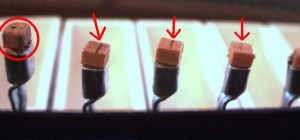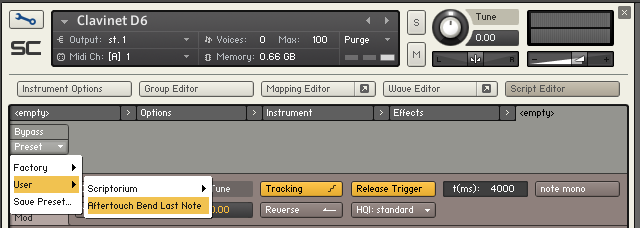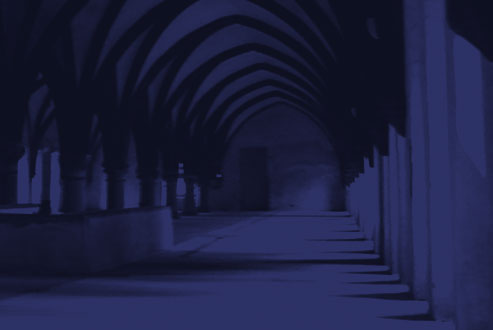Blog Menu
Geosonics Walkthrough Videos
Geosonics Walkthrough Videos
By James Thompson | 09.08.2013
For the curious who don’t yet have Geosonics, and existing users who want some power-tips, I’ve made some walkthrough videos to help clarify the way the instrument is structured, and exactly how the original Chris Watson recordings work with the sound design material, etc etc.
It’s taken all week for even this meagre result – I don’t know if it’s the same for everyone (I suspect not),
Read MoreFor the curious who don’t yet have Geosonics, and existing users who want some power-tips, I’ve made some walkthrough videos to help clarify the way the instrument is structured, and exactly how the original Chris Watson recordings work with the sound design material, etc etc.
It’s taken all week for even this meagre result – I don’t know if it’s the same for everyone (I suspect not), but personally I find that making these things is always an intoxicating mixture of minor technical niggles and searing embarrassment.
Anyway, I hope they help someone!
Building A Preset From Scratch
Jammer Overview
Effects & The Space Processor
Close ClosePRESS RELEASE – Geosonics Chris Watson collaborates with Soniccouture
PRESS RELEASE – Geosonics Chris Watson collaborates with Soniccouture
By Soniccouture | 08.08.2013
PLAY THE SOUND OF THE NORTH POLE – BBC’S CHRIS WATSON MAKES ‘VIRTUAL INSTRUMENT’
Acclaimed nature & wildlife sound recordist Chris Watson is behind an amazing ‘virtual’ musical instrument – a piece of software that allows the user to play music created with sounds from the North Pole, the Kalahari Desert, Venezuelan swamps and more.
The ‘virtual musical instrument’ – known as Geosonics –
Read MorePLAY THE SOUND OF THE NORTH POLE – BBC’S CHRIS WATSON MAKES ‘VIRTUAL INSTRUMENT’
Acclaimed nature & wildlife sound recordist Chris Watson is behind an amazing ‘virtual’ musical instrument – a piece of software that allows the user to play music created with sounds from the North Pole, the Kalahari Desert, Venezuelan swamps and more.
The ‘virtual musical instrument’ – known as Geosonics – was developed with London sound-software company Soniccouture. They first contacted Watson – known for his BAFTA award winning work on BBC’s Frozen Planet and Springwatch – in 2011, after hearing some of Chris’ recordings made using huge expanses of wire in remote parts of Australia.
James from Soniccouture says : ‘We were privileged to work with Chris because we wanted to create sounds with a very real, natural dimension to them. With Chris we had access to sounds that you literally can’t get anywhere else – he has crawled inside glaciers and fried himself in the desert for these recordings!’
VIDEO
A Short Video Of Geosonics can be seen on Youtube :
http://www.youtube.com/watch?feature=player_embedded&v=mMBOjRTTnoE
Chris Watson talks about the recordings used in Geosonics
http://www.youtube.com/watch?feature=player_embedded&v=1jvq6Y1tT3A http://www.youtube.com/watch?feature=player_embedded&v=guSu1DLC8Cw http://www.youtube.com/watch?feature=player_embedded&v=rrtb-N7lb5g http://www.youtube.com/watch?feature=player_embedded&v=aEfATLuYpfw
About Soniccouture
Soniccouture are a UK company founded by James Thompson & Dan Powell in 2005. They make and sell quirky virtual musical instruments from their website. They previously worked for Yamaha, making sounds for their synthesisers.
Availability and Pricing
Geosonics is available to download from www.soniccouture.com, priced £119 /$149
Geosonics: Chris Watson Interview Videos
Geosonics: Chris Watson Interview Videos
By James Thompson | 31.07.2013
As part of our upcoming Geosonics release, I spoke to Chris Watson over skype to find out some background to the many field recordings featured in the product. What unfurled was a fascinating discussion, adding more colour and depth to the recordings than I could have imagined. Tales of glaciers, baked river beds in the Kalahari, Volcanos in Iceland and of course, the very sound of the North Pole.
Read MoreAs part of our upcoming Geosonics release, I spoke to Chris Watson over skype to find out some background to the many field recordings featured in the product. What unfurled was a fascinating discussion, adding more colour and depth to the recordings than I could have imagined. Tales of glaciers, baked river beds in the Kalahari, Volcanos in Iceland and of course, the very sound of the North Pole.
The Swamp Interview:
The Ice & Water Interview:
The Wires Interview:
The Wind Interview :
Close Close
Scriptorium : Cluster
Scriptorium : Cluster
By Dan Powell | 23.07.2013
Cluster is a KSP script that creates tone clusters.
Read MoreYou often hear this kind of effect in horror movie soundtracks, and in certain contemporary classical music. It’s no big secret that I love this sort of stuff.
The script generates extra notes near the input MIDI note, and using a knob or controller you can move the notes nearer or further away from the centre pitch. This is different from a fist cluster on a piano since we generate pitches “in between” the distinct MIDI notes, so these are microtonal clusters in a sense.
You can set the number of Voices between 1 and 12. For each voice there is a deviation amount, seen at the bottom of the interface here as Dev 1 through Dev 12. These are cent deviations from the played pitch. Obviously Cluster will use a lot of polyphony if generating 12 voices for each input note.
The Cluster knob can be controlled with the Deviate CC controller, so you can perform or sequence moving away from unison to maximum cluster and back again to unison. Randomize will generate a set of Deviations within the set Range, and has a gaussian distribution so notes closer to the centre are more likely than notes further away from the centre. In the drop down menu you can set the Deviations to be recalculated for each note if you like.
DOWNLOAD THE SCRIPT
Requires Kontakt 4.2.4 or later.
Close CloseScriptorium : Last Note Pitch Bend Download
Scriptorium : Last Note Pitch Bend Download
By Dan Powell | 16.07.2013
Following the release of our D6 virtual instrument – Clav – some people with real-life experience playing a Hohner Clavinet mentioned that on their instrument they were able to bend the pitch of a note if they pushed down firmly on the keys. The D6 we have in our studio does not do this, however, no matter how hard we press the keys.
Read MoreIt seems that on many Clavinets the hammer tips get worn down over the years, and the key tabs bent out on an angle so that the string is not trapped flush between the hammer and the harp.
 If there is a small gap there you might be able to bend the string slightly since the hammer would have some play. I’m guessing that because we had our unit refurbished with new hammers I’m unable to bend the strings on this instrument.
If there is a small gap there you might be able to bend the string slightly since the hammer would have some play. I’m guessing that because we had our unit refurbished with new hammers I’m unable to bend the strings on this instrument.
Still, pitch bend by pressure is an interesting performance idea, so we’ve written a KSP script to add that feature to our Clav library, and to any other Kontakt instrument for that matter.
KSP SCRIPT : LAST NOTE AFTERTOUCH PITCH BEND
Using this script you can set the bend range in cents, up to a maximum of 2.00 semitones, although I find smaller values feel more “natural” for this slight wobble. The pitch bend works on the last note played only, avoiding the rather synthetic sound of all notes bending simultaneously.
For Clav, this script works best when loaded in the last (far-right) script position. Of course you can use this with any library, not just Clav. If you use it on a harpsichord patch you can create an effect somewhat like an 18th century clavichord.
This kind of feature would work much better with polyphonic key pressure, then each key could be bent independently, but poly AT is quite a rare feature on contemporary keyboards. (Perhaps it’s about to make a comeback?)
DOWNLOAD THE SCRIPT
Requires Kontakt 4.2.4 or later.
Quick Guide : Loading KSP Scripts into Kontakt.
You will need a full license of NI Kontakt ; you cannot edit Kontakt Player patches in this way.
Copy the script (.nkp file) to : User/ Documents/ Native Instruments/ Kontakt 4 or 5/ Presets/ Scripts
Open a Kontakt instrument (.nki) in edit mode, by clicking the Wrench icon shown below

Open the Script Editor, and click on the last tab on the far right , pictured below :
Go to the Script Editor preset menu, and navigate to the User section. You should see your recently added script there. Select it to load.

You can now save the Kontakt instrument (.nki) as a new version, and it will load with the script already in place.
Close Close




